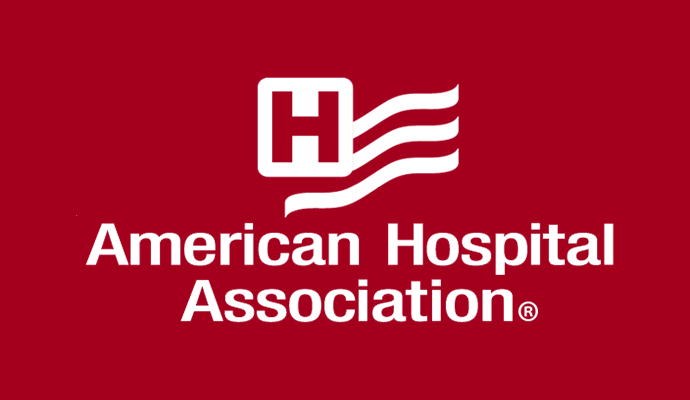AHA: Metropolitan Anchor Hospitals Serve More Vulnerable Populations
The American Hospital Association’s new hospital designation, Metropolitan Anchor Hospitals, identifies facilities in urban markets that frequently provide care to Medicaid beneficiaries and other vulnerable populations.

Source: AHA Logo
- Metropolitan Anchor Hospitals (MAHs), which serve low-income and marginalized urban populations, offer a disproportionately high share of uncompensated care and have lower operating margins compared to other hospitals in their markets, according to a report from NORC at the University of Chicago (NORC) commissioned by the American Hospital Association (AHA).
AHA recently developed the MAH hospital designation to identify a set of urban safety-net hospitals. These hospitals are in urban areas and have a Medicaid Inpatient Utilization Rate (MIUR) greater than the statewide average. In addition, MAHs have either a disproportionate patient percentage (DPP) greater than 70 percent or a DPP greater than 34.5 percent combined with a ratio of uncompensated care costs to beds of $35,000 or more.
AHA contracted with NORC to conduct research on the characteristics of the 465 MAH-designated hospitals and the communities they serve. The hospitals are located across 162 urban markets.
Researchers found that MAH facilities provide a disproportionately high amount of Medicaid and uncompensated care in their markets. MAHs account for 48 percent of market-wide Medicaid inpatient days and 49 percent of market-wide uncompensated care costs. Additionally, MAHs account for 33 percent of market-wide beds and 34 percent of market-wide inpatient revenue.
The average MIUR of a MAH is almost 37 percent, compared to 17 percent for non-MAHs in the same market. This indicates that MAHs are more likely to fill inpatient beds with Medicaid beneficiaries than surrounding non-MAH facilities.
Although MAHs see higher net patient revenues, they experience lower margins than non-MAHs in their markets. The median operating margin was 1.6 percent for MAHs and 4.4 percent for non-MAHs. Similarly, the median total margin was 3.0 percent for MAHs and 5.5 percent for non-MAHs.
“This is likely explained by higher spend on charity care, as well as a lower share of Medicare patients and a higher share of Medicaid patients among MAHs compared to other hospitals,” the report stated. “MAHs tend to spend a higher portion of operating expenses on charity care than other hospitals in the same markets.”
Almost half of MAHs meet the Coronavirus Aid, Relief, and Economic Security (CARES) Act safety-net hospital definition, while 84 percent receive both Medicare and Medicaid disproportionate share hospital (DSH) payments. In comparison, 57 percent of non-MAHs in the same market receive Medicare and Medicaid DSH payments.
In order to be eligible for DSH payments, hospitals must serve a large proportion of low- or no-revenue patients. These payments are intended to offset uncompensated care costs
MAHs serve counties with greater racially diverse populations compared to other hospitals. For example, in MAH-served counties, 25 percent of the population is Hispanic and 16 percent of the population is Black. In counties served by non-MAHs, 18 percent of the population is Hispanic, while 13 percent is Black.
MAHs also provide care to more Medicaid beneficiaries and uninsured individuals, the report noted.
MAHs are more likely to provide essential services compared to non-MAH facilities. More MAHs offered obstetrics care (87 percent versus 70 percent), psychiatric care (59 percent versus 33 percent), and HIV-AIDS services (56 percent versus 35 percent). MAHs were also more likely to provide burn care, substance use disorder services, and dental services.
MAHs offer more community support services than non-MAHs as well. The hospitals have a higher likelihood of providing teen outreach, mobile health services, and chronic disease prevention programs.
Additionally, MAHs help support the workforce by offering graduate medical education (GME) programs and hiring 50 percent more clinicians and technicians than non-MAHs. MAHs are also 25 percent more likely to be teaching hospitals than other hospitals in their markets.
